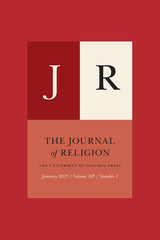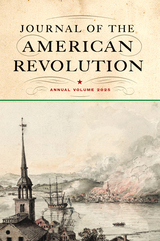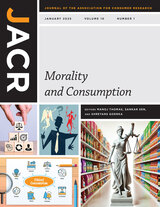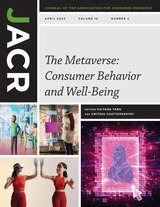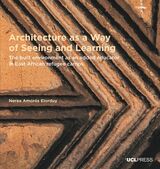
Displaced before they were born, children living in long-term refugee camps along the East African Rift grow and learn surrounded by ready-made structures. Architecture as a Way of Seeing and Learning explores what these built environments teach us about both childhood development and refugee assistance. With an eye toward architecture, Nerea Amorós Elorduy models how a more empathetic approach to refugee relief might both decolonize humanitarian aid and nurture the learning of young children.


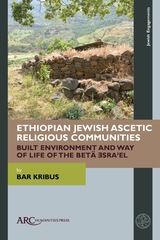
The Betä Ǝsraʾel (Ethiopian Jews) have a unique history and religious tradition, one of the most fascinating aspects of which are the mäloksočč, commonly referred to as monks in scholarly and popular literature. The mäloksočč served as the supreme religious leaders of the Betä Ǝsraʾel and were charged with educating and initiating Betä Ǝsraʾel priests. They lived in separate compounds and observed severe purity laws prohibiting physical contact with the laity. Thus, they are the only known example in medieval and modern Jewry of ascetic communities withdrawing from the secular world and devoting themselves fully to religious life.
This book presents the results of the first comprehensive research ever conducted on the way of life and material culture of the ascetic religious communities of the Betä Ǝsraʾel. A major part of this research is an archaeological survey, during which these religious centres were located and documented in detail for the first time.

Climate change is no longer an abstract threat. Day after day, an already disrupted climate is impacting the lives of millions, and the time available to curtail climate change is alarmingly limited. Going for zero greenhouse gas emissions requires retooling everything about industry, agriculture, transportation, and every city and town that people inhabit. The work of architects, engineers, landscape architects, urban designers and the countless others who shape the built environment has never been more relevant. Decarbonizing how buildings are designed, constructed, and operated is a sea change that is already altering professional principles and practices.
In Going for Zero: Decarbonizing the Built Environment on the Path to Our Urban Future, seasoned architect and former AIA president Carl Elefante addresses how buildings and cities can and must help resolve the looming climate emergency. Elefante offers a decidedly alternative viewpoint, one informed by his architecture career rescuing buildings from senseless demolition and learning from the practices and wisdom embedded in built heritage.
For architects and the countless others who work together creating human habitation, the twenty-first century imperatives demand a profound mode shift, from an expansion mindset to one of reintegration and healing. Elefante argues that curtailing the climate emergency, resolving intransigent social and economic injustice, and launching the urban era onto a truly beneficial and sufficient path presents challenges that must be addressed through built form.
The challenge of our built environment and the possible solutions are covered in four sections: climate imperative, justice imperative, urban imperative, and beyond modernism. Elefante explains that revitalizing communities by optimizing existing resources makes social, economic, and environmental sense and directs resources where they are most needed.
Going for Zero is an urgent call to action and path forward. Elefante’s message is ultimately one of hope—but we must act now.

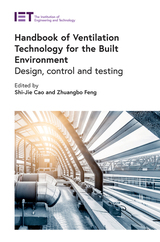
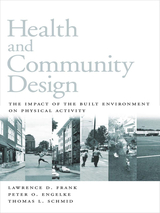
Health and Community Design is a comprehensive examination of how the built environment encourages or discourages physical activity, drawing together insights from a range of research on the relationships between urban form and public health. It provides important information about the factors that influence decisions about physical activity and modes of travel, and about how land use patterns can be changed to help overcome barriers to physical activity. Chapters examine:
• why urban and suburban development should be designed to promote moderate types of physical activity
• the divergent needs and requirements of different groups of people and the role of those needs in setting policy
• how different settings make it easier or more difficult to incorporate walking and bicycling into everyday activities
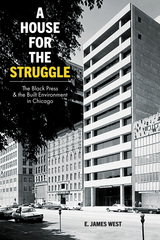
- Winner of the 2023 Michael Nelson Prize of International Association for Media and History (IAMHIST)
- Recipient of the 2022 Jane Jacobs Urban Communication Book Award
- Winner of the 2023 American Journalism Historians Association Book of the Year
- Winner of the 2023 ULCC’s (Union League Club of Chicago) Outstanding Book on the History of Chicago Award
- Recipient of a 2023 Best of Illinois History Superior Achievement award from the Illinois State Historical Society
- Winner of the 2023 BAAS Book Prize (British Association for American Studies)
- Winner of a 2023 The Brinck Book Award and Lecture series (University of New Mexico School of Architecture + Planning)
- Honorable Mention for the 2021-22 RSAP Book Prize (Research Society for American Periodicals)
Buildings once symbolized Chicago's place as the business capital of Black America and a thriving hub for Black media. In this groundbreaking work, E. James West examines the city's Black press through its relationship with the built environment. As a house for the struggle, the buildings of publications like Ebony and the Chicago Defender embodied narratives of racial uplift and community resistance. As political hubs, gallery spaces, and public squares, they served as key sites in the ongoing Black quest for self-respect, independence, and civic identity. At the same time, factors ranging from discriminatory business practices to editorial and corporate ideology prescribed their location, use, and appearance, positioning Black press buildings as sites of both Black possibility and racial constraint.
Engaging and innovative, A House for the Struggle reconsiders the Black press's place at the crossroads where aspiration collided with life in one of America's most segregated cities.
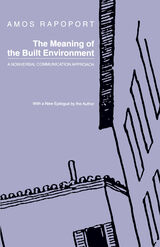
"Fills a significant gap: it introduces the notion of environmental meaning so clearly that no reader will doubt the basic premise that the environment holds meaning as part of a cultural system of symbols, and influences our actions and our determinations of social order." —Design Book Review
"This is the second edition of a book first published in 1982. . . . Enthusiastic and inquiring as the reader is brought into the writer's thought processes." —Progress in Human Geography (England)
"It has merits not to be found in any other book in this much-discussed and little understood subject, to wit: it is short, it is simple, and it is useful. It is even, in parts, entertaining....a book which will help architects to do their job better." —Architecture Australia

In Opera and the Built Environment, music scholar Laura Vasilyeva considers the remarkable mass construction of opera houses around the world since the 1800s and the no-less-remarkable bids to standardize the architectural features of their interiors across this vast theatrical infrastructure. Now known as the teatro all’italiana, this style of architecture—made most famous by Milan’s Teatro alla Scala—is characterized by auditoria with tiers of stacked boxes and a dominant red hue.
With attention to the sensuous dimensions of their auditoria, from their surfaces to the atmospheres to their acoustics and thresholds, Vasilyeva reveals the calculated reasons these theaters took on the form they did. The result is a book that reveals unknown associations between the Italian opera house and matters of environmental destruction, empire, and belonging, showing us new and unexpected patterns in how opera connects to the world we know.
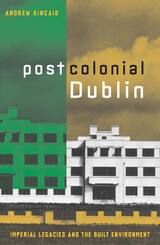
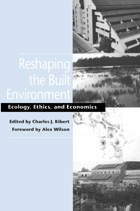
Because of the profound effects of the built environment on the availability of natural resources for future generations, those involved with designing, creating, operating, renovating, and demolishing human structures have a vital role to play in working to put society on a path toward sustainability.
This volume presents the thinking of leading academics and professionals in planning, civil engineering, economics, ecology, architecture, landscape architecture, construction, and related fields who are seeking to discover ways of creating a more sustainable built environment. Contributors address the broad range of issues involved, offering both insights and practical examples. In the book:
- Stephen Kellert describes the scope of the looming ecological crisis
- Herman Daly explains the unsustainability of the world's economic system and the dangers inherent in the current movement toward globalization
- John Todd describes the evolution of wastewater processing systems inspired by natural systems
- John Tillman Lyle discusses the importance of landscape in the creation of the human environment
- Randall Arendt argues for a fundamental shift in land development patterns that would not only provide for more green space in new developments, but would also increase the profitability of developers and the quality of life for new home owners
- Thomas E. Graedel proposes the application of lessons learned from the emerging science of industrial ecology to the creation of "green" building.
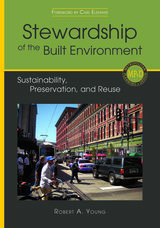
Young begins by describing how historic preservation in the United States, often overlooked because of the predominant focus on new construction, is actually an important sustainable design strategy. He then examines the social, environmental, and economic benefits of preservation—from the societal value of reusing existing buildings to financial incentives available for rehabilitation. Young concludes with insights into the future of reusing buildings as a sustainability strategy. He also provides several informative appendices, including a glossary of key terms and acronyms and recommendations for further reading.
Readers will become familiar with essential terminology; sustainability and historic preservation metrics; government oversight processes; and opportunities for smart growth afforded by rehabilitation. This knowledge is key to preserving the past while building a sustainable future.

Urban Informality and the Built Environment demonstrates the value of greater and more diverse forms of engagement of built-environment disciplines with what constitutes urban informality and its politics. This collection lays forth a range of new methodologies to the study of urban informality, by exploring case studies from multiple geographies, including the creative place-making of street artists in Accra, the morphological evolution of urban Tirana, urban agriculture in la Habana, and social reproduction in Greece. Together these case studies offer ways to promote cross-fertilization between disciplines, lenses, geographies, and methodologies. Drawing on recent research by architects, planners, political scientists, geographers, and urban theorists, this book brings a multi-disciplinary approach to the study of informality and the built environment in diverse contexts.
READERS
Browse our collection.
PUBLISHERS
See BiblioVault's publisher services.
STUDENT SERVICES
Files for college accessibility offices.
UChicago Accessibility Resources
home | accessibility | search | about | contact us
BiblioVault ® 2001 - 2025
The University of Chicago Press


